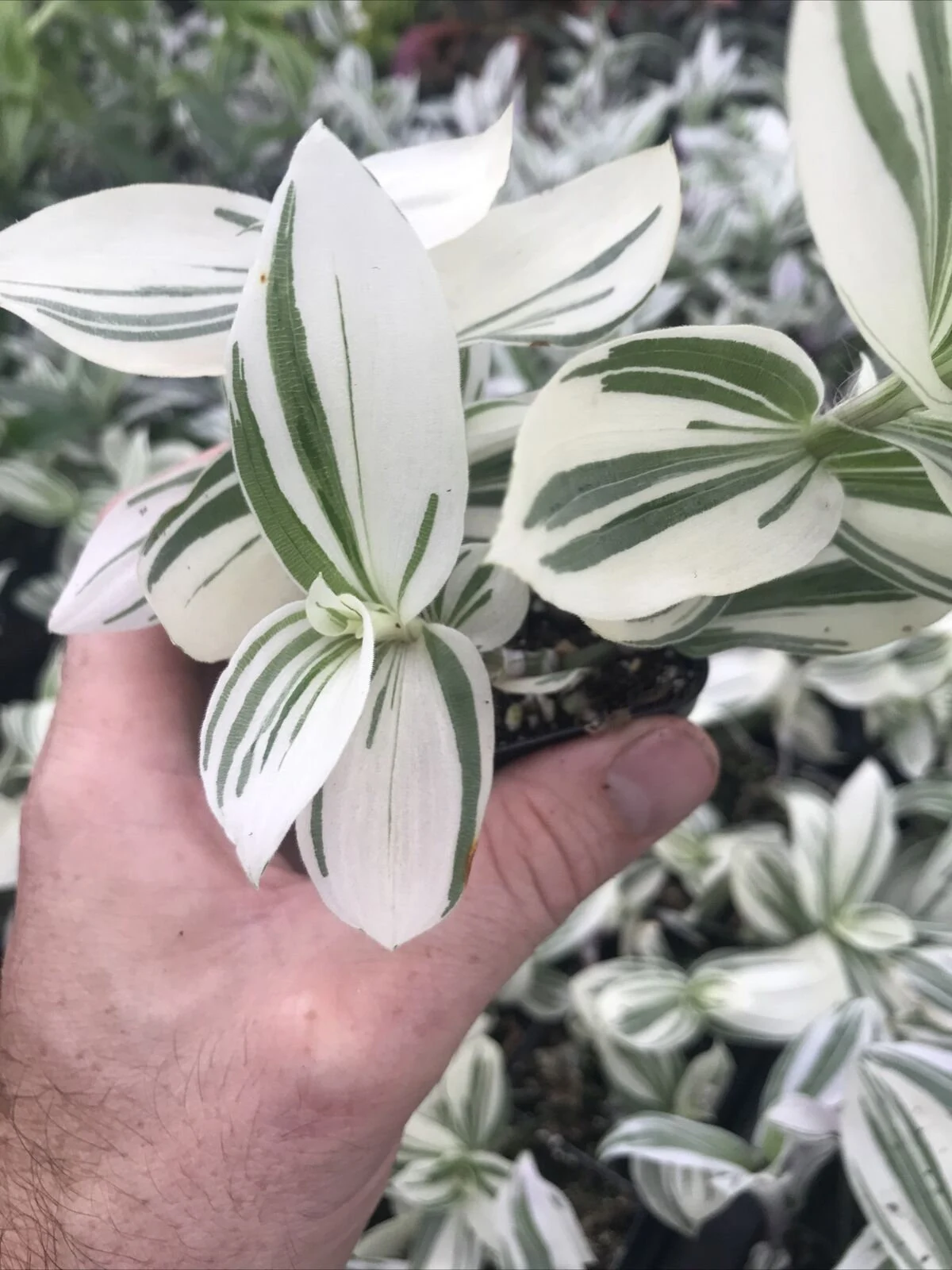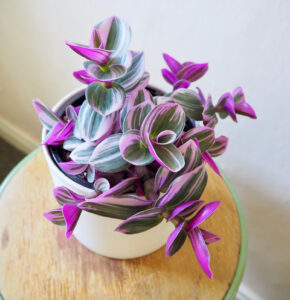The Pistachio Tradescantia (Tradescantia “Pistachio”) is a stunning, low-maintenance houseplant known for its unique variegated leaves with green, purple, and light pistachio-colored hues. It’s part of the Tradescantia family, which includes several species commonly grown as ornamental plants. Here’s a care guide for your Pistachio Tradescantia:
1. Light Requirements:
- Bright, indirect light is ideal for the Pistachio Tradescantia.
- It can tolerate some direct sunlight but can lose its vibrant coloring if exposed to too much intense sun, which can also cause leaf burn.
- If the plant becomes leggy or starts to lose its variegation, it may be a sign that it’s not receiving enough light.
2. Watering:
- Keep the soil slightly moist but not soggy.
- Water the plant when the top inch of soil feels dry to the touch.
- Be cautious not to overwater, as Tradescantia plants are prone to root rot in standing water.
- In the winter, reduce watering as the plant’s growth slows down.
3. Humidity:
- Pistachio Tradescantia thrives in moderate to high humidity.
- While it can tolerate average household humidity, it will do better if you increase humidity through misting, a humidity tray, or a room humidifier.
- If the air is too dry, the leaves may turn brown at the tips.
4. Temperature:
- This plant prefers warm temperatures, ideally between 60°F to 80°F (15°C to 27°C).
- It’s sensitive to cold drafts and temperatures below 50°F (10°C), so keep it away from windows or air conditioning vents during the colder months.
5. Soil:
- Use a well-draining potting mix that retains some moisture but allows excess water to escape.
- A standard houseplant mix with added perlite or sand works well.
- Make sure the pot has drainage holes to prevent water from collecting at the bottom.
6. Fertilizing:
- Fertilize with a balanced, water-soluble fertilizer during the growing season (spring and summer) every 4-6 weeks.
- Avoid fertilizing in the fall and winter when the plant is not actively growing.
7. Pruning:
- Prune regularly to keep the plant looking tidy and bushy.
- Remove leggy or dead growth to encourage fuller, more compact growth.
- You can also propagate your Pistachio Tradescantia by cutting a stem just below a leaf node and rooting it in water or soil.
8. Repotting:
- Tradescantias grow fairly quickly, so repotting every 1-2 years is generally recommended.
- Choose a pot that is 1-2 inches larger than the current one to allow for growth.
- Repot during the spring or early summer for the best results.
9. Pests:
- Watch out for common houseplant pests such as spider mites, aphids, and mealybugs.
- Regularly check the leaves for signs of pests, like webbing or sticky residue.
- If pests are present, treat them with insecticidal soap or a mixture of water and neem oil.
10. Leaf Care:
- The leaves of Pistachio Tradescantia can get dusty, so gently wipe them with a damp cloth to keep them clean and healthy.
- Avoid using chemical leaf shine products, as they can clog the leaf pores.
11. Propagation:
- Pistachio Tradescantia is easy to propagate by cutting healthy stems and rooting them in water or directly in soil.
- Snip a stem just below a leaf node, place it in water or soil, and wait for roots to develop.
12. Growth Habit:
- Pistachio Tradescantia has a trailing or creeping growth habit, making it perfect for hanging baskets or as a ground cover.
- It can grow up to 12-24 inches (30-60 cm) in length, and will often spread outwards.
With its stunning colors and trailing habit, the Pistachio Tradescantia makes a fantastic addition to your plant collection. It’s an easy-to-care-for plant that will thrive with just a little attention to light, water, and humidity.


